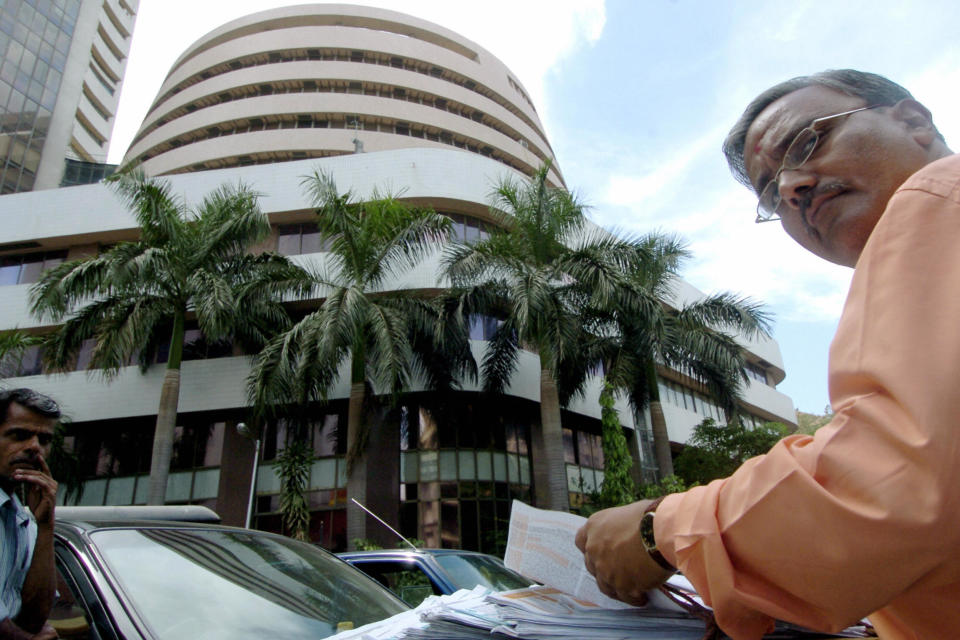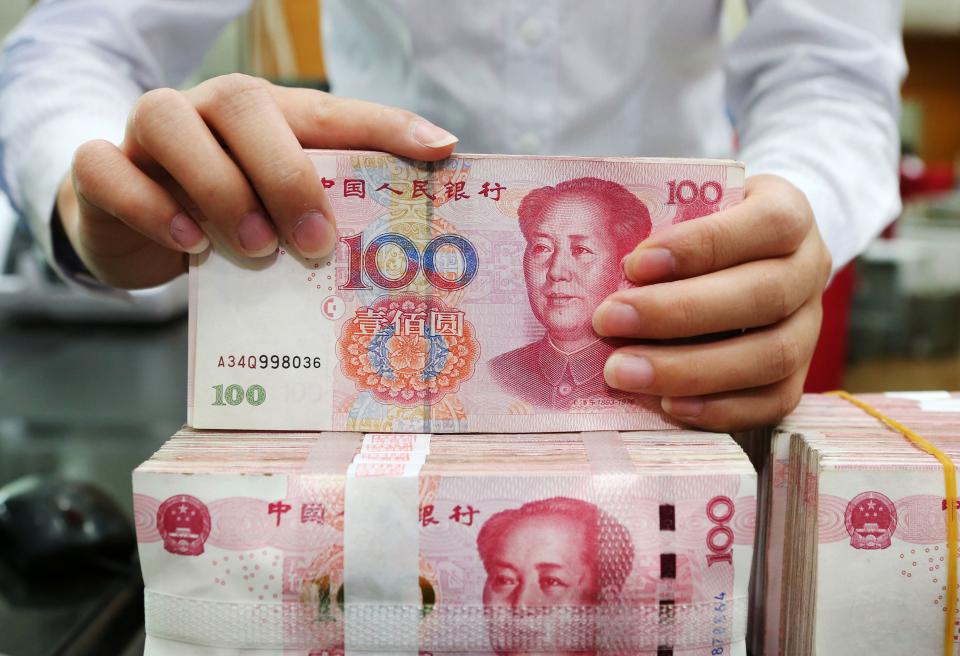Nine 'grey swan' risks to watch in markets in 2019

Many investors will be familiar with the term “Black Swans” — the term coined by author Nassim Nicholas Taleb to describe unexpected or unlikely market events that can cause huge disruption.
Nicholas Taleb argued that, while unlikely, the outsized impact of black swan events means investors and companies should have contingency plans in place to protect themselves just in case.
But what are grey swans? Nomura’s global FX strategist Bilal Hafeez and his team describe them as “risks that many had highlighted, but turned out to materialise in a much more extreme fashion than expected.”
Hafeez and his team give the example of emerging market currency sell-offs — typified by Turkey and India — and spiking stock market volatility as examples of grey swans in 2018. People saw these events coming, but underestimated how bad they would be.
Nomura predicted nine possible grey swans for 2019 in a note sent to clients this week. Not all of them are bad — a renaissance for the Italian economy would be seen as a good thing by most people. But if the impact is outsized, then investors will want to watch for potential upside as well as downside.
Here are Nomura’s grey swans:
The end of populsim

Trump’s election in the US, the Brexit vote in Britain, the rise of the Five Star Movement in Italy, the election of Jair Bolsonaro in Brazil, the yellow vest protest in France — the rise of populist politics has been a defining story of global politics for the last few years.
Hafeez and his team lay the blame at the feet of China, arguing that: “Globalisation, rather than just producing cheap goods for rich countries, has now allowed countries such as China to take middle-class jobs from developed countries.” This has fuelled resentment, Nomura argued.
“From this it follows that if China’s model falters, then it could provide a leading indicator
of populism declining elsewhere,” Hafeez and his team wrote. “And it is certainly the case that China’s model is under pressure.”
If populism fails to deliver on its promise of re-balancing economies to favour the downtrodden, then its popularity could begin to wane. Nomura cites the splintering factions on Brexit and the US Republicans’ loss of the House in November as signs this could be beginning.
Oil goes to $20

“Oil prices have a recent history of moving from boom to bust and in ways that oil analysts have not expected,” Hafeez and his team wrote, suggesting that such an unexpected crash could happen next year.
While unlikely, the Nomura team said that any slowdown in Chinese economic growth could seriously dent demand and push down the price of oil (BL=F, CZ=F). Continued strong supply from the US would have the same effect.
Add to that longer-term trends such as the move to electric vehicles, 3D printing technology reducing shipping demand, and a move to greener energy globally, and oil could face serious headwinds.
The ‘big market quake’

“It’s easy to paint a picture of a market crisis in 2019,” Hafeez wrote.
The Fed is hiking interest rates and reducing its balance sheet, the Bank of Japan and the ECB are both curtailing massive bond purchases to support markets, and both the Chinese and US economies are set to slow. The effects of all these macro factors led to the spiking volatility (^VIX) in markets and a major sell-off in US equities towards the end of this year.
These trends may well continue into 2019 and be simply the precursor to a larger shock. Many market watchers point to the increasingly likely inversion of the yield curve as a sign of a possible looming US recession.
“Collapsing stock prices, a contagious sovereign crisis in Europe, and Chinese defaults would be the obvious manifestation of a market quake,” Hafeez and his team write. “In such an environment, cash would likely be king, risk markets would underperform and safe-haven currencies such as the yen would do well.”
Italian debt recovers

“There’s not much to like about Italy’s fixed income,” Nomura wrote. “But while it is tempting to extrapolate 2018’s bearish trend, the market may suddenly realise how overly pessimistic it has become.”
Italy runs a budget surplus when debt repayments are stripped out and has a current account surplus. Italy’s budget plans, if successful, could provide the same kind of economic growth that Trump’s tax cuts provoked in the US.
“Just as investors under-estimated US growth, they could make the same mistake with Italy,” Hafeez and his team wrote. “A major rally in Italian bonds could be the surprise of 2019.”
Emerging market deflation

Inflation is at a historic low in India, Brazil, Indonesia, Russia, and South Africa, leading Hafeez to write: “It’s unusual for so many large EMs [emerging markets] to have a lengthy period of low inflation… and it suggests something structural could be going on.”
Currency pressure from the US could prove a deflationary force, as many emerging economies have weak growth. “Compared with DMs [developed markets] the CPI [consumer price index] basket of the big EMs is weighted towards commodities, and with US shale producers ramping up their production and China’s growth slowdown set to accelerate in the spring of 2019, commodity prices could tumble further,” the Nomura team write.
The Chinese renminbi recovers

The market currently expects the Chinese renminbi to depreciate against the dollar next year but Nomura said clients may want to consider the possibility of the reverse happening.
If the US Fed signals that interest rate rises will be slower than forecast that could dent the dollar. “China could surprise by being much more forceful and pre-emptive on fiscal stimulus,” Nomura wrote, which would support the renminbi.
“The other potential positive development is increased global demand for RMB and the likelihood that foreigners, whom have held back from investing in local bonds and equities in recent months, will return,” Hafeez and his team write.
Global growth accelerates, not slows

Almost all analysts expect 2019 to be a tough year for economic growth as the twin engines of the global economy — the US and China — both slow.
But consensus can sometimes be wrong and Nomura said there are some signs that the global economy could actually do well next year. These include signs that the global economy still has spare capacity, early signals that the US and China could resolve their trade dispute, and a possible lessening of the impact of rising oil prices on consumer spending.
“In recent weeks weaker equity markets, wider credit spreads, flattening yield curves and
a still-strong US dollar suggest investors have priced in a much weaker outlook for growth and profitability,” Nomura wrote. “If – against our expectations – global growth does now re-accelerate, many of these trends would clearly reverse.”
Euro area deflation

Inflation in the eurozone is tracking at around 1%, which is much lower than it usually would be at this stage in the economic cycle. That means that “when growth does roll over, deflation risks increase far quicker than they would normally,” Hafeez and his team wrote.
“Deflation in Europe would have important ramifications for markets. Japan faced these
challenges in the last downturn,” Nomura wrote. “This, alongside falling inflation expectations would flatten the yield curve. If the ECB is unable to lower real yields, equities and credit markets are likely to price growth risks even lower.”
An inflation ‘sonic boom’

Nomura wrote: “Although inflation has been fleeting and sporadic, what if it has just been pent up and is waiting to be unleashed? The US economy could be one of the first to confront higher inflation at full employment.”
US growth is expected to slow in 2019 but if for some reason it keeps up a solid pace then market forces may create a “sonic boom” in inflation late in the year, Nomura warned, as full employment leads to higher wages and rising prices.
———
Oscar Williams-Grut covers banking, fintech, and finance for Yahoo Finance UK. Follow him on Twitter at @OscarWGrut.
The possibility of ‘Referendum 2.0’ on Brexit is rising
No-deal Brexit ‘could jeopardise financial stability’ as stats show finance pays £75bn in tax
$23bn goes into European tech even as Brexit fears grow
The most devastating chart from the UK government’s Brexit analysis
An Australian startup that works with Uber and Amazon is expanding in the UK — despite Brexit
